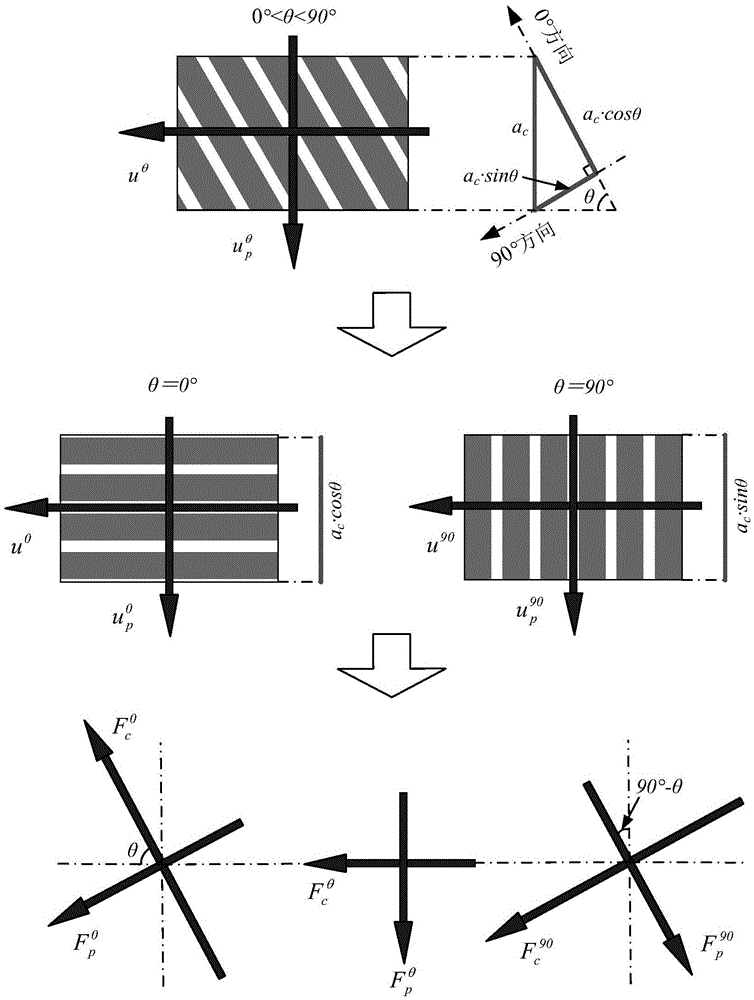Carbon fiber reinforced composite material unidirectional laminate two-dimensional cutting force modeling method
A technology for reinforced composite materials and unidirectional laminates, applied in the field of mechanical cutting, can solve the problems of fiber orientation limitation, lack of quantitative guidance, and no public reports of CFRP two-dimensional cutting force modeling methods, reaching high levels. Prediction accuracy, the effect of realistic guidance
- Summary
- Abstract
- Description
- Claims
- Application Information
AI Technical Summary
Problems solved by technology
Method used
Image
Examples
Embodiment
[0057] In this embodiment, a diamond-coated cemented carbide flying knife (rake angle γ 0 = 25°, relief angle α = 15°, cutting edge blunt circle radius r ε =15μm), workpiece material (T700CFRP unidirectional laminate), cutting thickness a c =20um, cutting speed V c = 100, 150, 200, 250, 300, fiber direction angle θ = 0,90 (parallel, vertical), 15,30,45,60,75 (along fiber), 105,120,135,150,165 (reverse fiber) as experimental parameters; cutting force The collection is done by Kistler-9272 force measuring instrument.
[0058] The modeling method of two-dimensional cutting force of carbon fiber reinforced composite unidirectional laminate specifically includes the following steps:
[0059] In the first step, the same tool parameters (γ 0 =25°,α=15°,r ε =15μm, diamond coating), the same cutting parameters (V c =200m / min,a c =20μm) to carry out right-angle free cutting experiments of T700CFRP single-layer plywood under different fiber direction angles θ=15, 30, 45, 60, 75 (f...
PUM
 Login to View More
Login to View More Abstract
Description
Claims
Application Information
 Login to View More
Login to View More - R&D
- Intellectual Property
- Life Sciences
- Materials
- Tech Scout
- Unparalleled Data Quality
- Higher Quality Content
- 60% Fewer Hallucinations
Browse by: Latest US Patents, China's latest patents, Technical Efficacy Thesaurus, Application Domain, Technology Topic, Popular Technical Reports.
© 2025 PatSnap. All rights reserved.Legal|Privacy policy|Modern Slavery Act Transparency Statement|Sitemap|About US| Contact US: help@patsnap.com



